
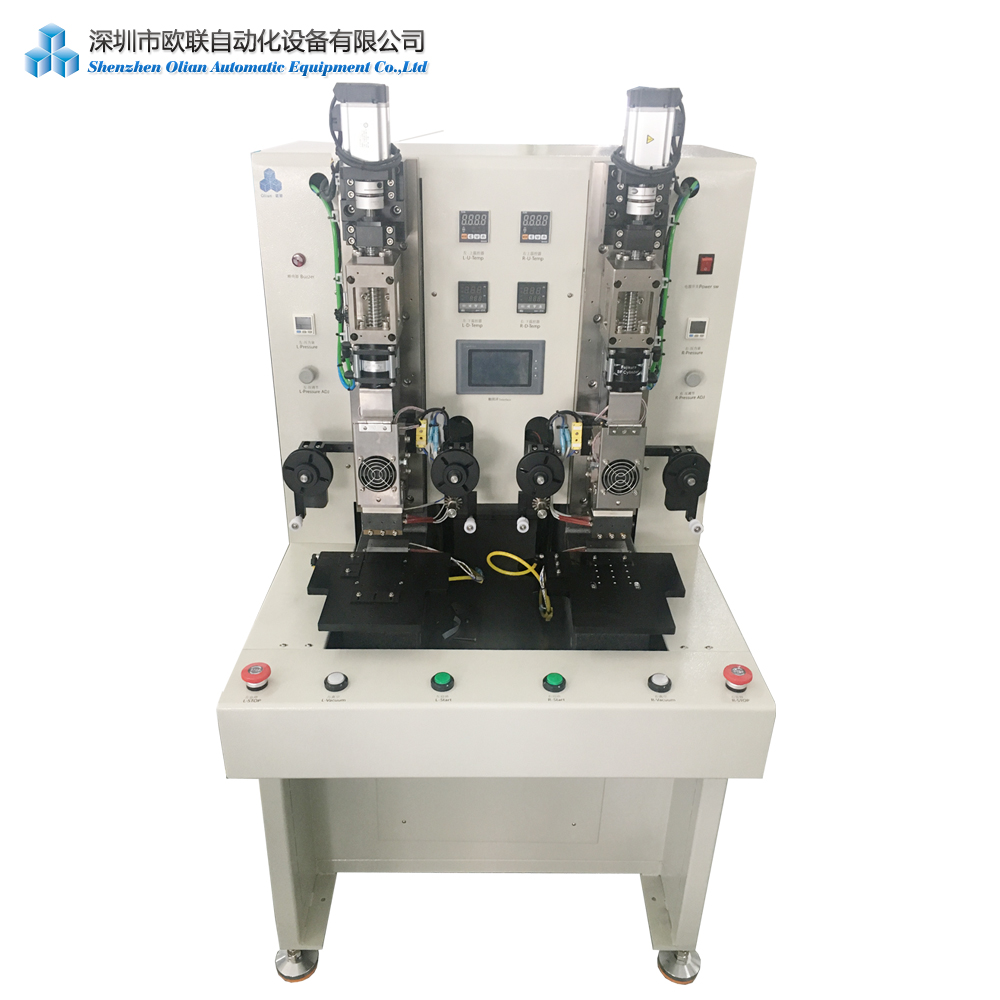
COG bonder, also named COG (Chip on glass) machine,Chip ic bonding machine, COF(chip on film) bonder ,COG heat bonder, COG bonding machine, Chip IC heat press machine, Chip on glass bonding machine.It is widely used in the LCD/LED/OLED, LCM/panel/screen/display , for Mobilephone/Watch/pad/notebook/touch panel/Ad Player/bank card/camera/ and all the flat and edge screens. for produce factories and repairing service shops all over the world.
The COG machine may consist of HD Digital Microscope and control system, and also has a Digital Pressure Gauge, and vacuum generator which may help to hold the panel during the bonding process. The bonding press head may press the IC/COF onto the Glass/PCB/FPC using ACF conductive adhesive as medium, by a certain temperature, pressure and time.
According to different LCD/LED/OLED and different screens, there are many ACF tapes models. ACF tape is the import medium of the bonding process.
Shenzhen Olian is the professional COG bonder manufactury ,we are the LCM Equipment factory solution provider.
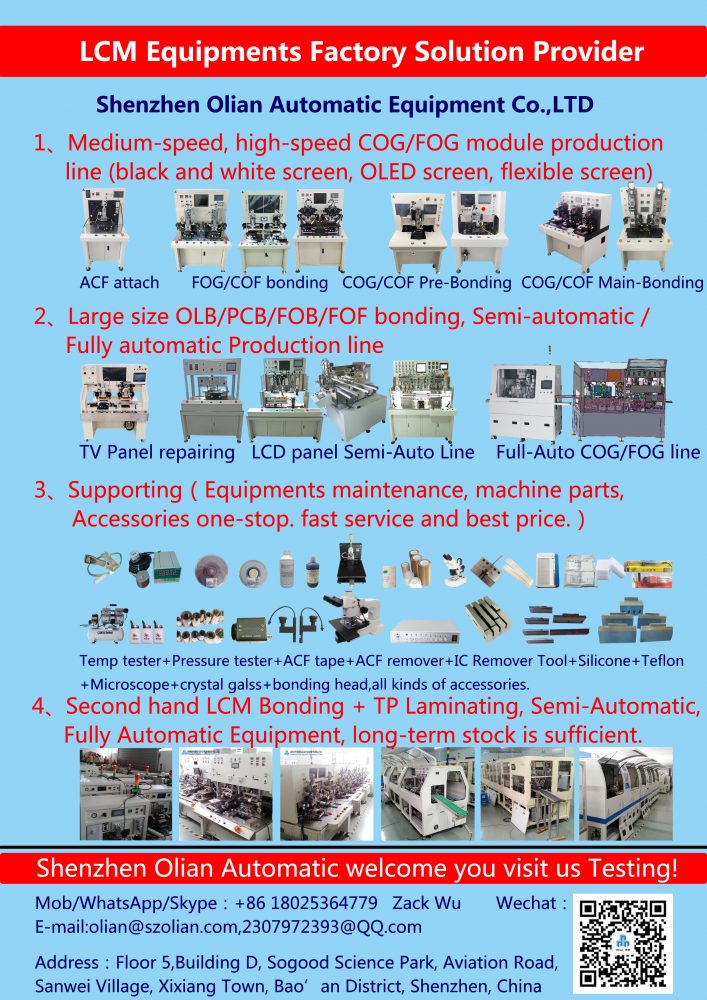
The machine has Pre-Bonder and Main-Bonder . They are all constant temperature machines. it maybe have single station bonder ,double stations , three stations, and maybe four stations bonder.
Features:
*Suitable for multi variety small batch production
*Constant temperature heating system
*Panasonic PLC Control system
*FAST Visual processing system
*Imported Japanese CCD Automatic Contraposition Configuration
*Manual / automatic switching
*Imported electrical configuration
Specification:
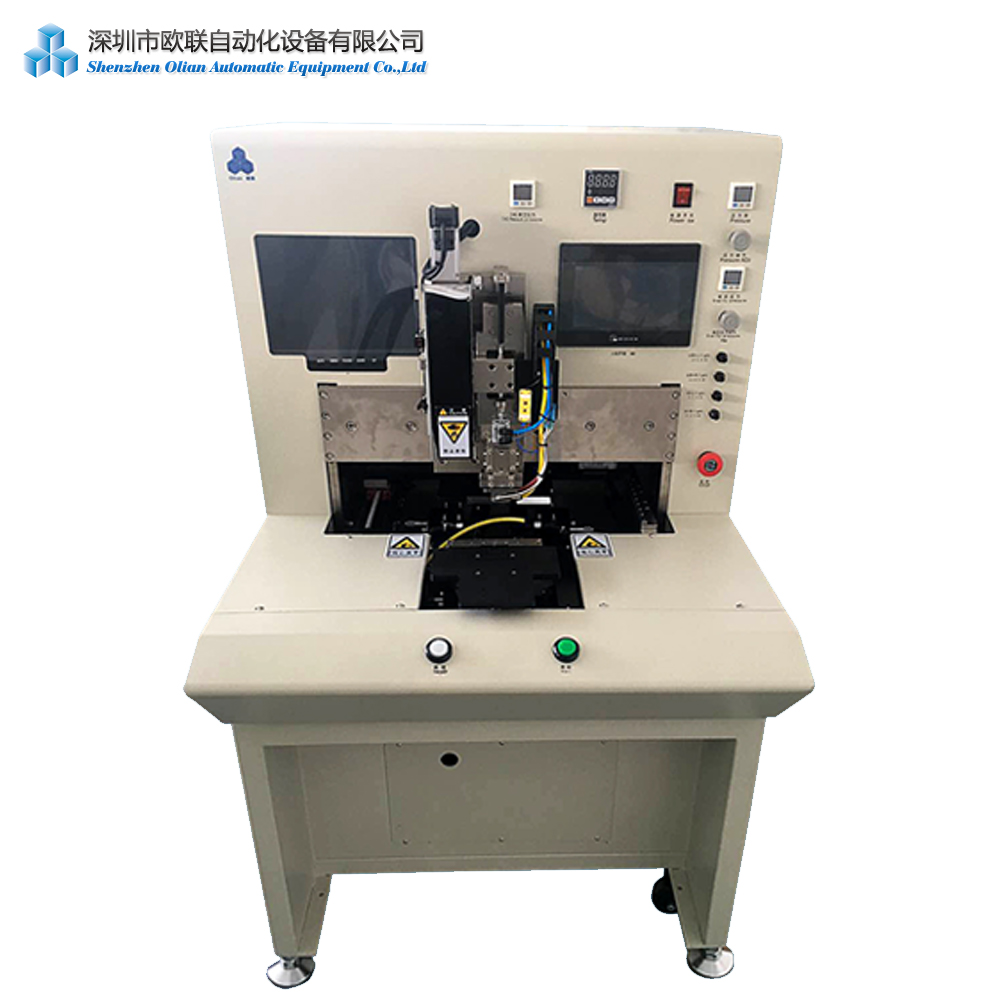
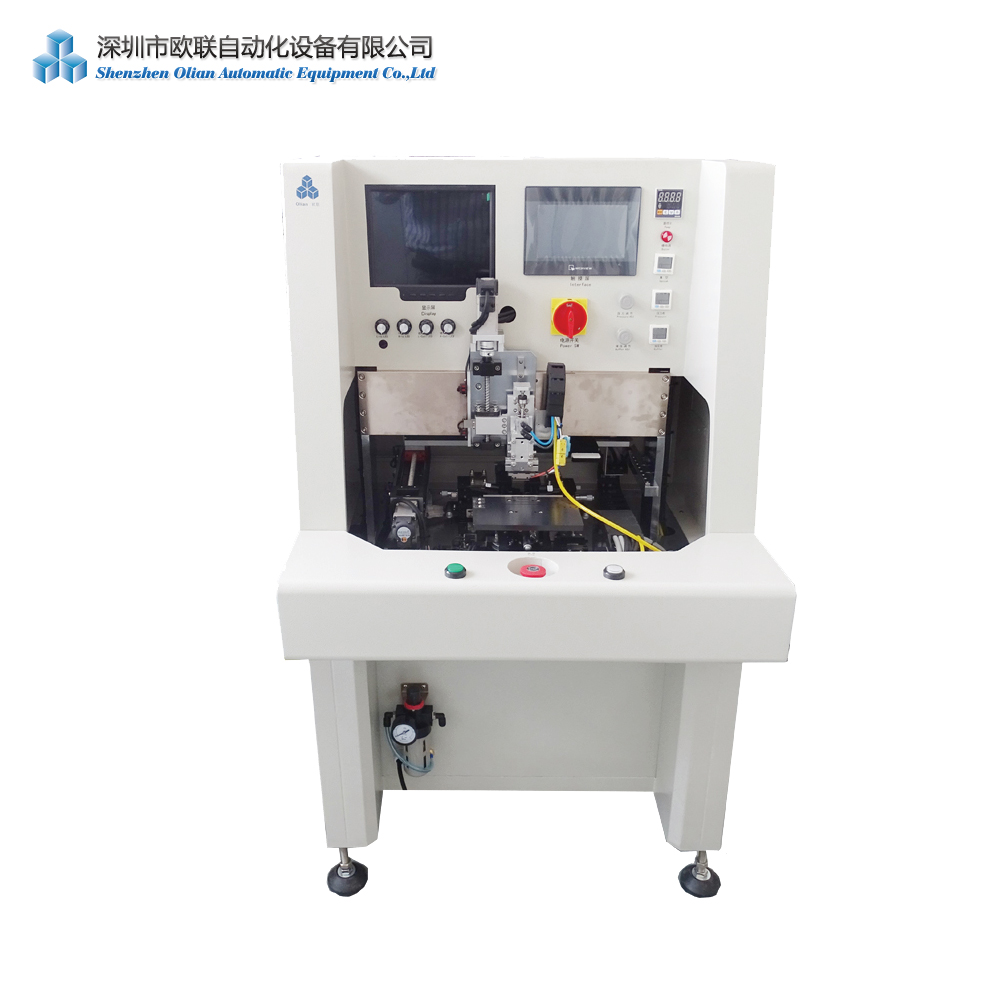
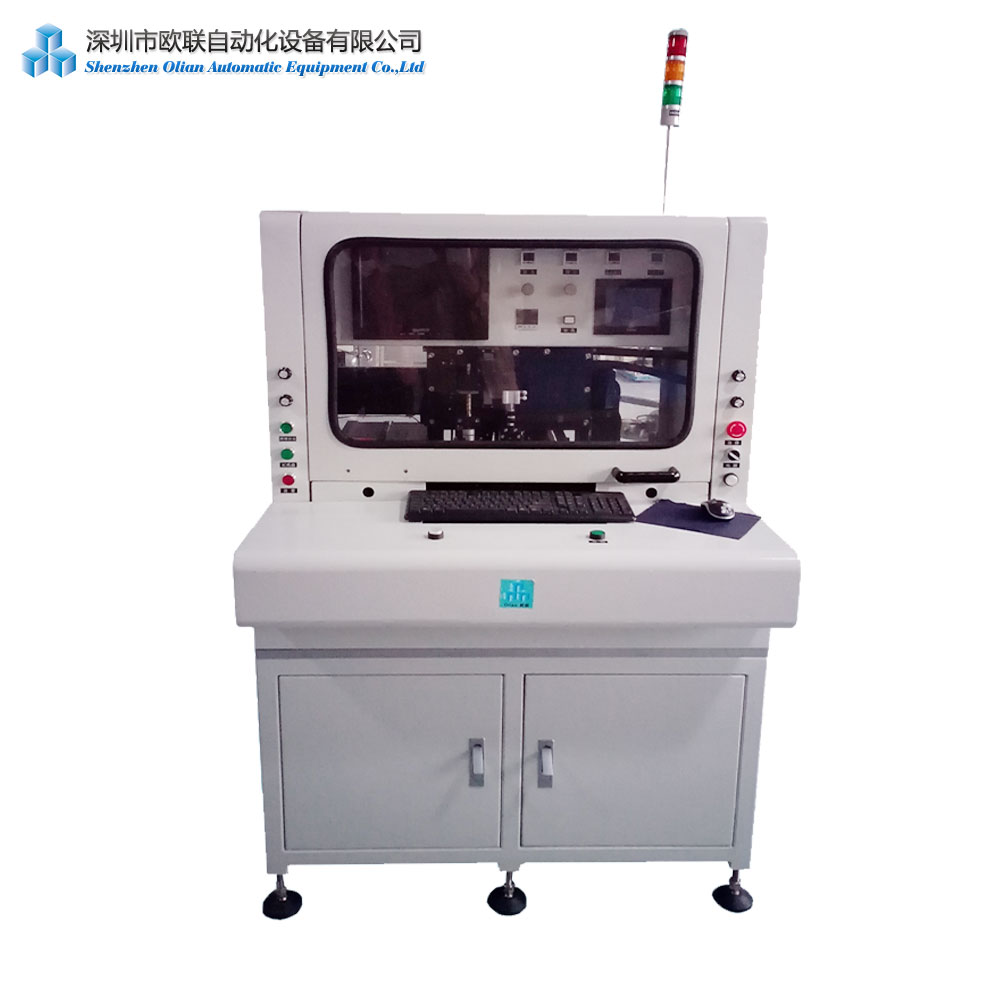
Model: OL-C003B/C005/C006
Product Name: Semi-Automatic Mid/High-speed COG/COF Pre-bonding machine
Suitable For: Suitable for IC bonded to the LCD which attached ACF
Size Range: 1~7 inch
Attach Precision: ±2.5UM
IC Size: L:2~40mm,W:0.8~3mm
Machine Capacity: 650pcs/H–1000pcs/H
Power Supply: 220V±10%,50HZ,1000W/1200W
Air Supply: 0.5~0.7MPa,dry air
Platform Size: 140*100MM
Platform Precision: ±0.01MM
Pressure Head Size: 40*2MM Customizable
Temp Range: 1~300℃
Time Range: 1~99.9
N.W: About 300KG/350KG
Features:
*PID Control Constant Temp Heating System,Automatic temperature compensation to ensure that the temperature of hot pressing is stable.
*Panasonic PLC Control system.
*Use high precision low-friction cylinder control pressure to ensure the accuracy of pressure control.
*High steel structure set, dual ceramic indenter configuration, to ensure the stability of the equipment.
*Imported electrical configuration,
*For OLED high-end products,high quality,high successful rate。
Specification:
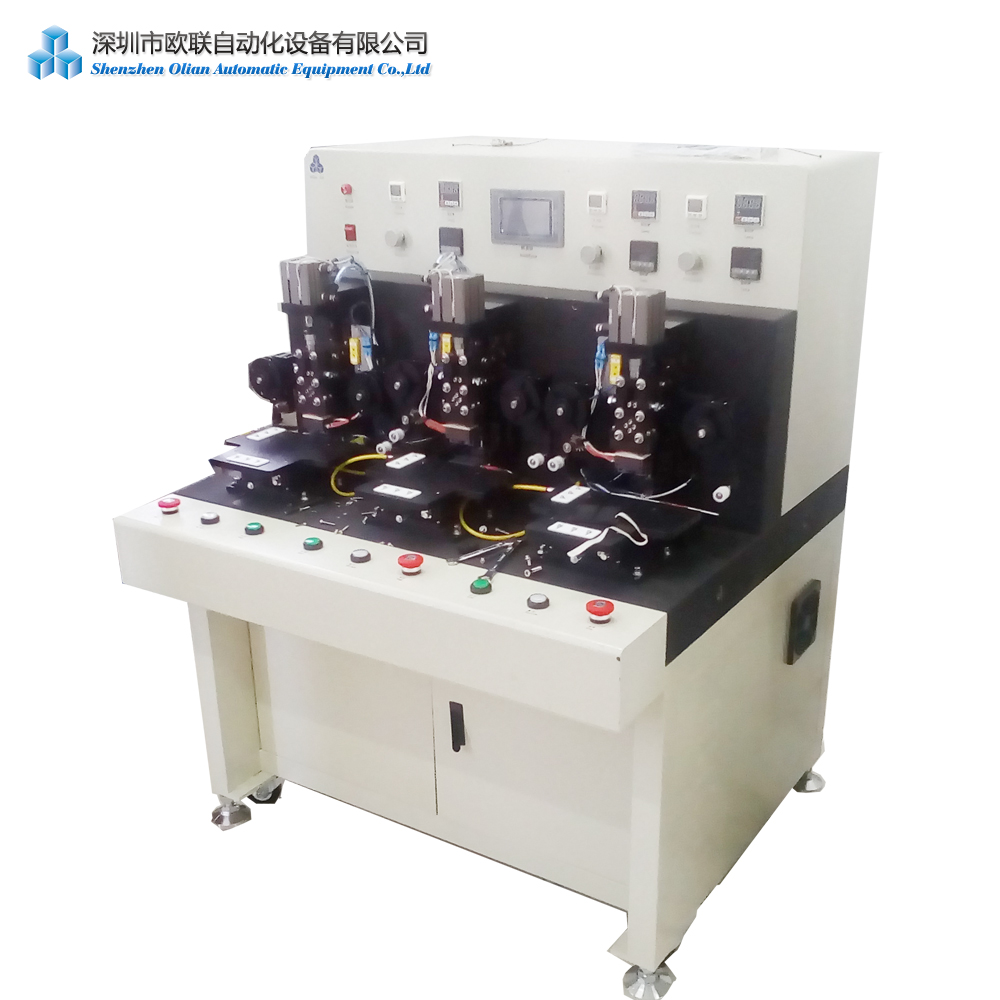
Model: CM006
Product Name: 1-12 inch Triple Stations Semi-Automatic High-speed COG main-bonding machine
Suitable For: Suitable for IC bonded to the LCD which attached ACF
Size Range: 1~12 inch
Attach Precision: ±4.5UM
IC Size: L:2~40mm,W:0.8~3mm
Machine Capacity: 1100pcs/H
Power Supply: 220V±10%,50HZ,2000W
Air Supply: 0.5~0.7MPa,dry air
Platform Size: 150*100MM
Platform Precision: ±0.01MM
Pressure Head Size: 45*5MM Customizable
Temp Range: 1~400℃
Time Range: 1~99.9
Product Size:L1025*W750*H1400 MM
N.W: About 350KG

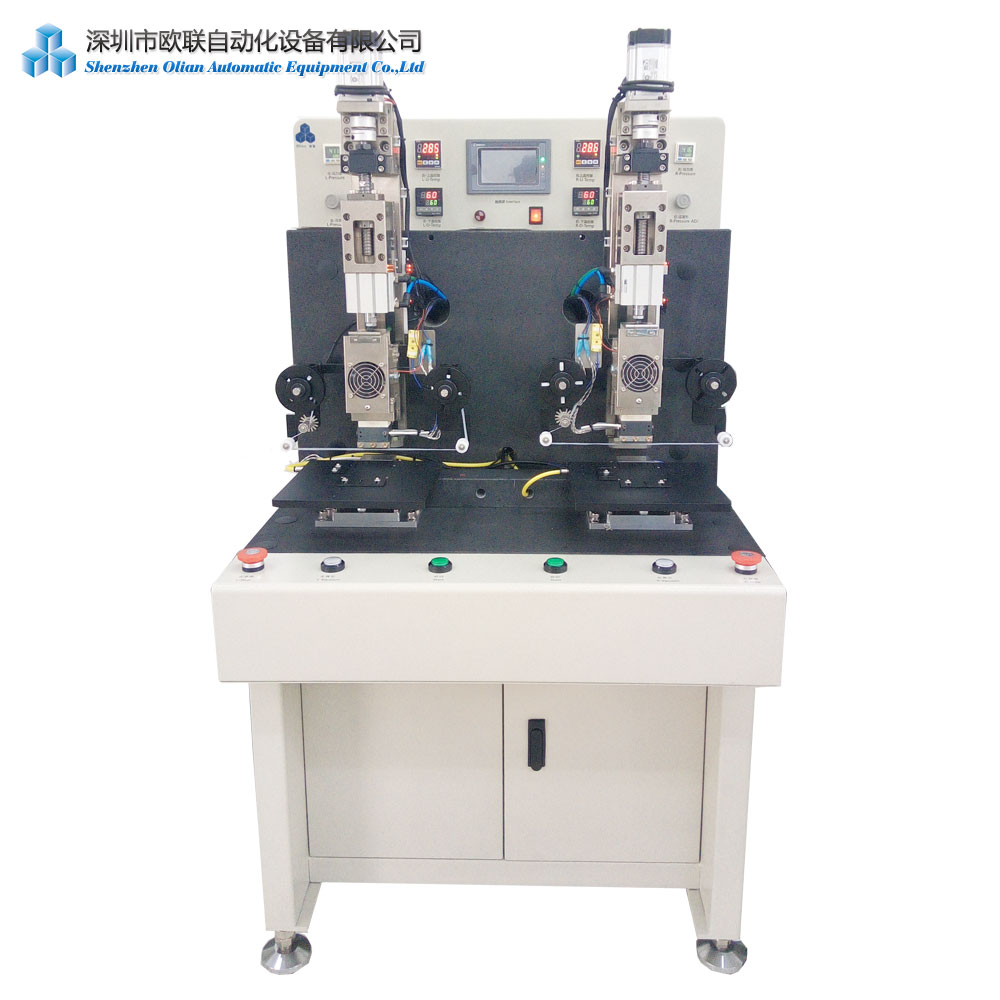
Model: OL-C008/OL-C012
Product Name: 1-12 inch Double Stations Semi-Automatic Mid-speed Servo COG main-bonding machine
Suitable For: Suitable for IC bonded to the LCD which attached ACF
Size Range: 1~12 inch
Attach Precision: ±4.5UM
IC Size: L:2~40mm,W:0.8~3mm
Machine Capacity: 600pcs/H
Power Supply: 220V±10%,50HZ,1200W
Air Supply: 0.5~0.7MPa,dry air
Platform Size: 150*100MM
Platform Precision: ±0.01MM
Pressure Head Size: 45*5MM Customizable
Temp Range: 1~400℃
Time Range: 1~99.9
Product Size:L640*W700*H1320MM
Full automatic COG bonder, include all the glass loading/glass cleaning/IC Loading/ACF pre-attaching/COG pre-bonder/COG main-bonder /COG glass output.
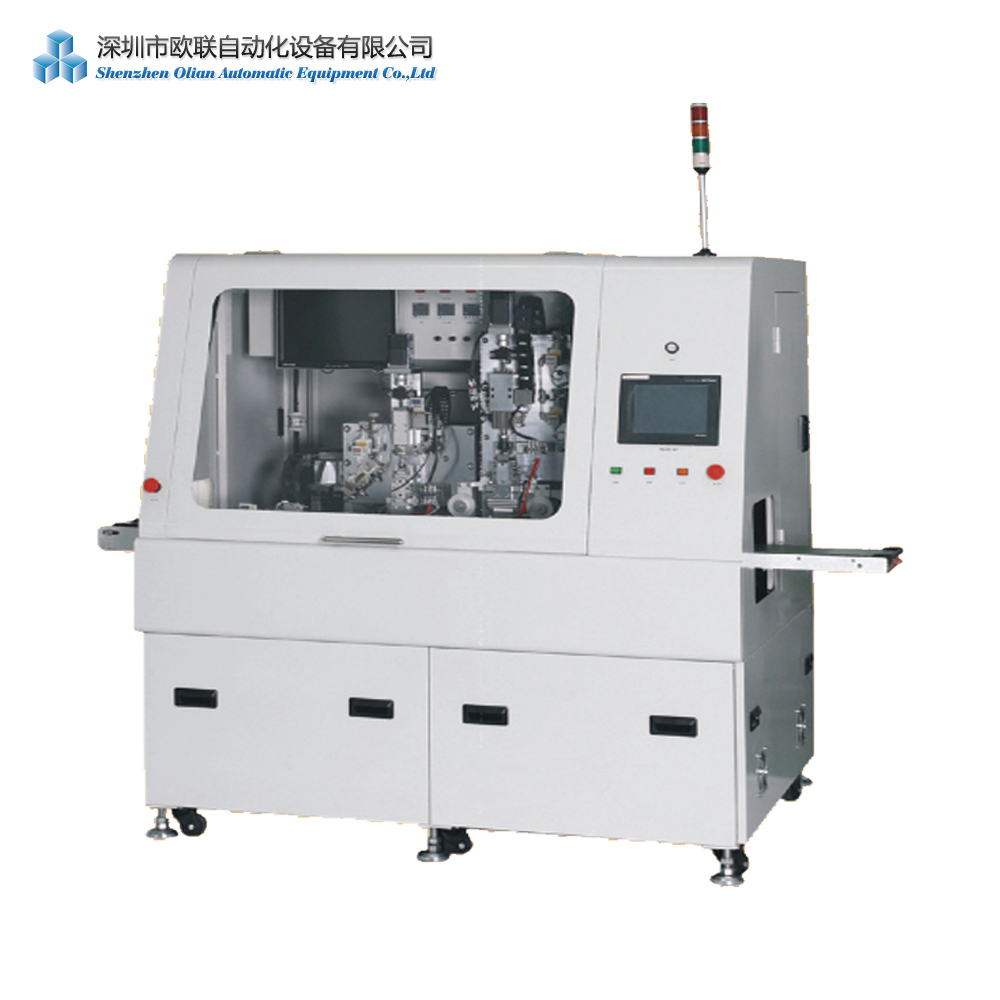
Features:
*Constant temperature heating system
*Panasonic PLC Control system
*Human – Machine interface
*Imported electrical configuration
*High Precision contraposition system
*Include the glass loading,glass cleaning,IC loading,ACF pre-attaching,COG pre-bonding,COG main-bonding ,COG output processes,it is COG processes all in one machine.
Specification:
Model: FAC001
Product Name: 1~7inch Full Automatic COG bonder
Suitable For: Suitable for IC Bonding to the LCD, ACF attach, IC preload and pre-bonding, main-bonding,output, completed in one machine.
Size Range: 1~7 inch
Attach Precision: ±2.5UM
IC Size: L:2~40mm,W:0.8~3mm
Machine Capacity: 1000pcs/H
Power Supply: 220V±10%,50HZ,5000W
Air Supply: 0.5~0.7MPa,dry air
Platform Size: 150*100MM
Platform Precision: ±0.01MM
Pressure Head Size: 45*5MM Customizable
Temp Range: 1~300℃
Time Range: 1~99.9
Product Size: W1500*D2300*H1700MM
Semi Automatic LCM Making produce include: ACF attaching ,COG pre-bonding, COG final-bonding , FOG(FOB) bonding, as below:
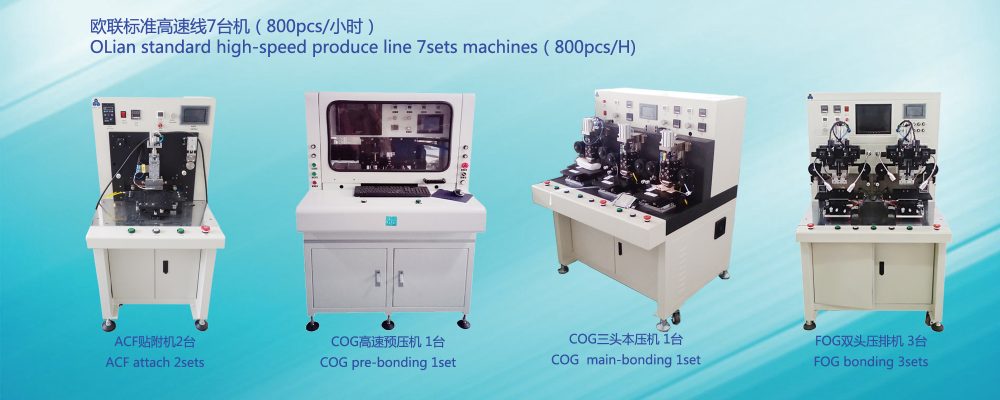
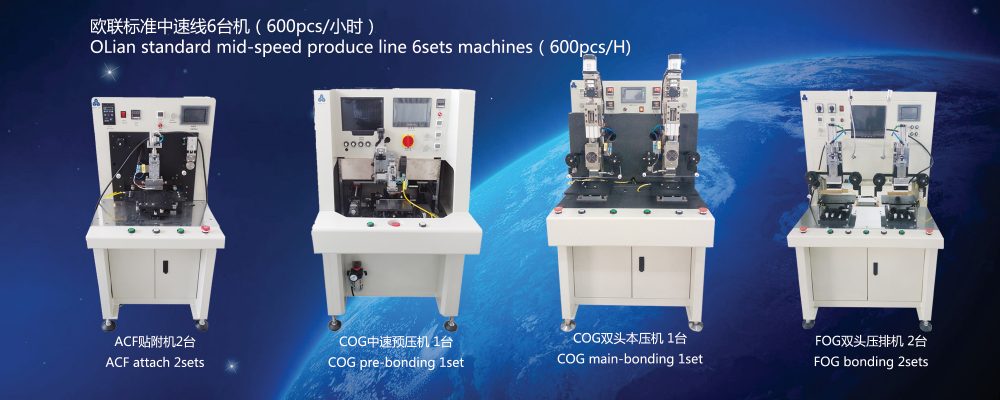
Full automatic FOG bonder, It include the ACF attaching on the glass, FPC loading, FPC bonding on the glass and output to testing..
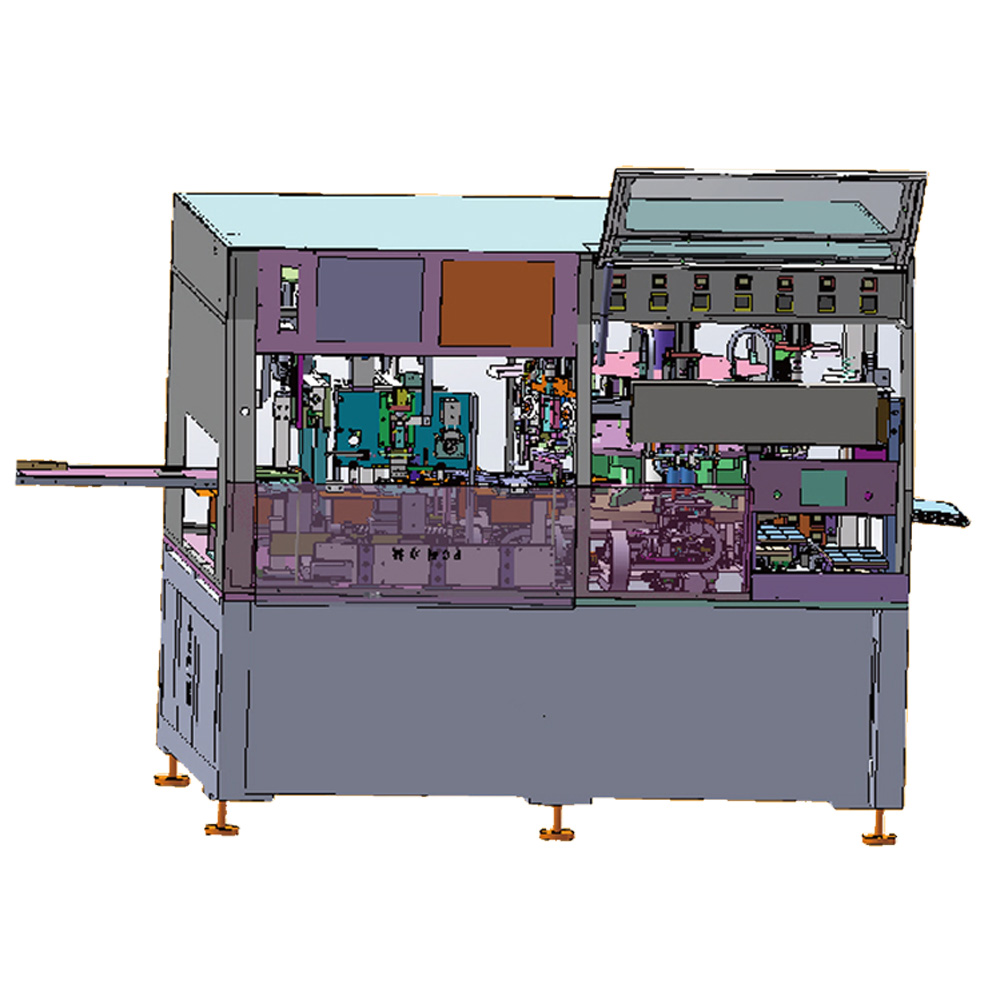

LCM full automatic bonder include all the process of the COG and FOG bonding : the LCD loading,LCD cleaning, IC loading, IC cleaning,ACF attaching on the glass, IC pre-bonding, IC bonding cheking, and IC main-bonding processes. then the ACF attaching for FPC, FPC loading, FPC bonding on the glass and output to testing…
We design and make the standard COG/COF/ACF Bonders and customized ACF bonder for your personalized product requirements, also design and manufacture other automation equipment for your requirements, and welcome OEM&ODM machines.
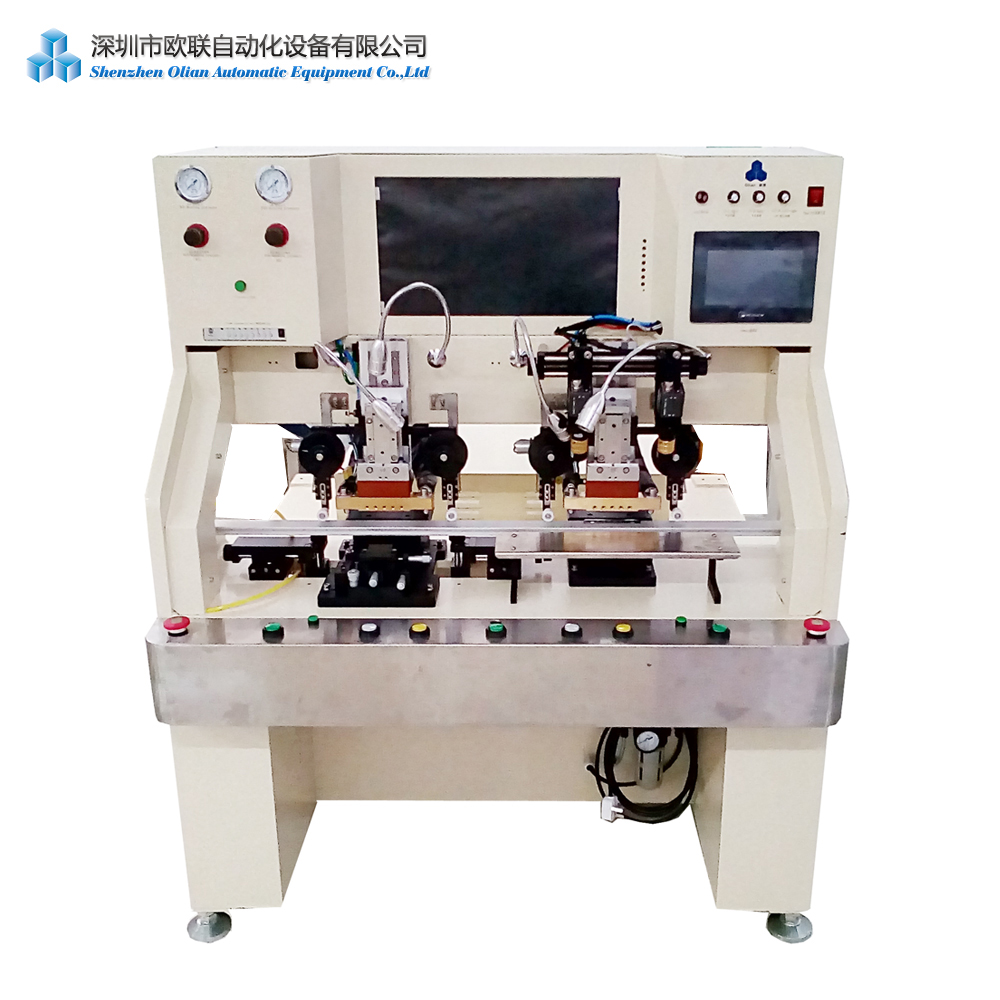
COF bonder, also name TAB bonder, ACF bonder, OLB Bonder , Chip on Film bonder. COF(Chip on Film, Chip on Flex).COF bonder is widely used in the TV/laptop/pad panel, it is very popular in the TV/laptop repairing for the LCD/LED/OLED panel bonding. For TV or laptop panel repairing COF bonding machine, has COF on glass bonding and COF on PCB board bonding. The COF Bonder also can do COF on flex cable, COF on film bonding, and maybe IC on film bonding. Normal the COF bonder for TV Repairing is Pulse heating bonding machine with Titanium alloy press bonding head.
Our COF bonder and all the accessories list for TV/laptop panel repairing as below:
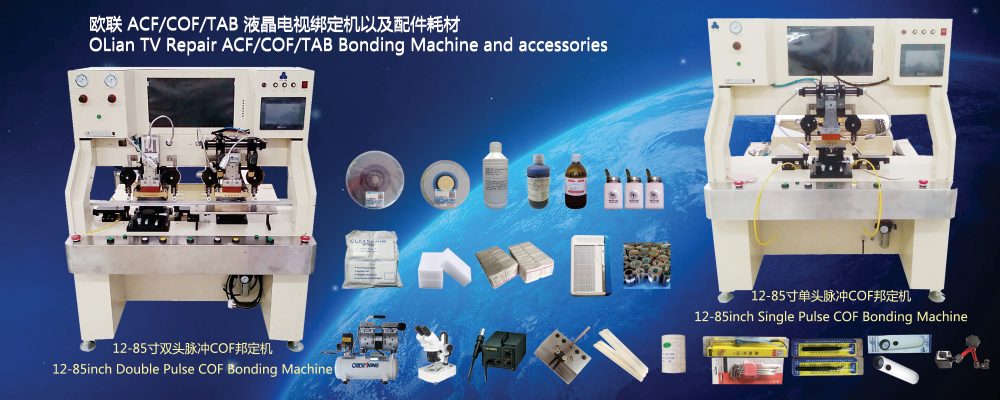
We also offer all the accessories: ACF tapes, ACF Remover, Blue glue, Acetone, Alcohol ,Customized bonding head, Quartz glass, Silicone tape, Teflon tape, Microscope, Air Compressor, COF cutter, Cleaning nanosponge, Cleaning clothes wiper, Ear buds, Pump bottles, T-bit, T-rubber, T-Iron, Magnifier lens, Allen key, Precision tweezers, Soldering Stations, Removing Wind Station Hot Air Gun, LEDS,LVDS cables, LCD Test Board, LCD/LED Tester.RT809H programmer, Open cell, Polarizer, Backlight ,T-Con Board, Main-board, IC, TAB COF IC and others.
Please contact us feel free to purchase the COF bonder for TV Repairing accessories.
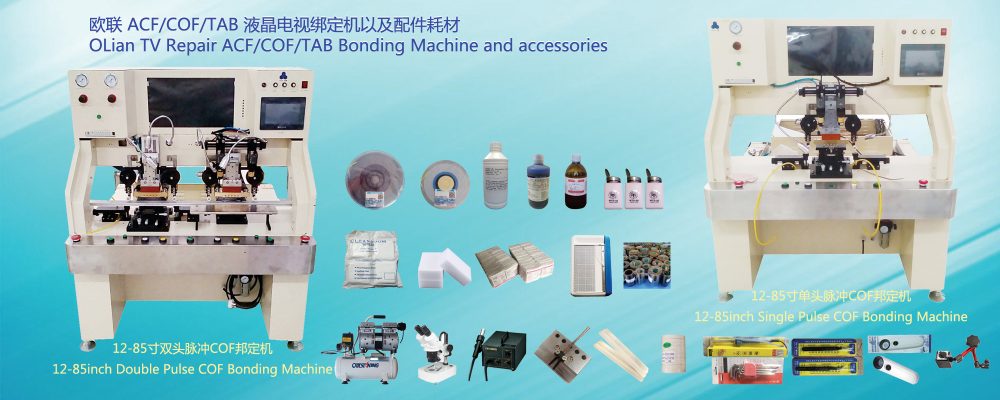
Welcome to buy the COF bonder for TV Repairing and all the COF bonder accessories.
COF bonders for full screen /edge screen/OLED screen mobilephone
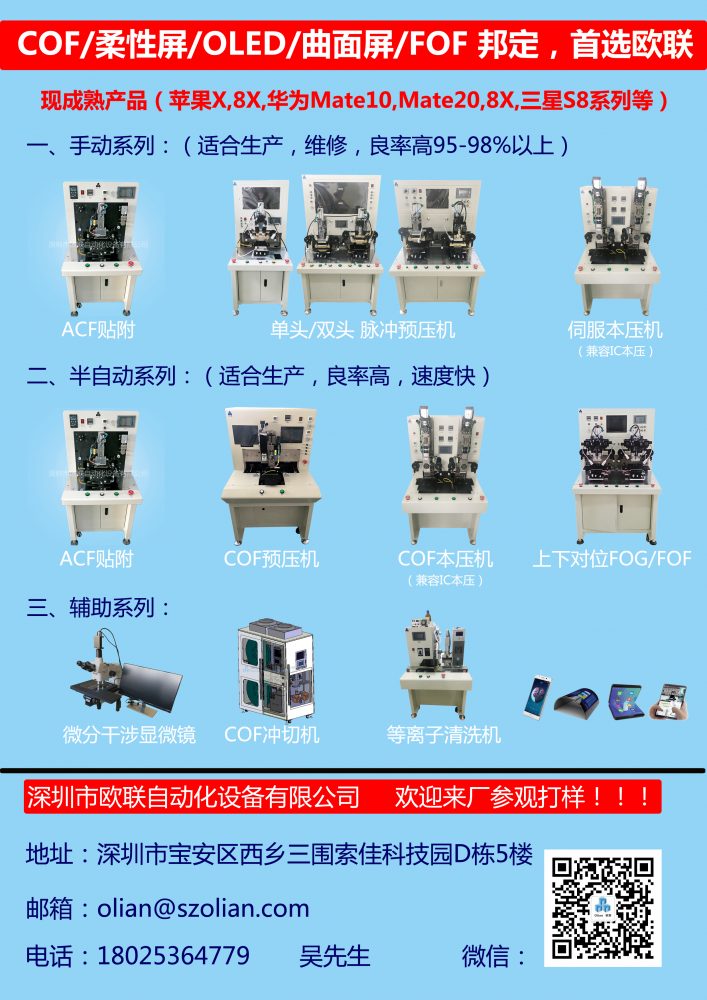




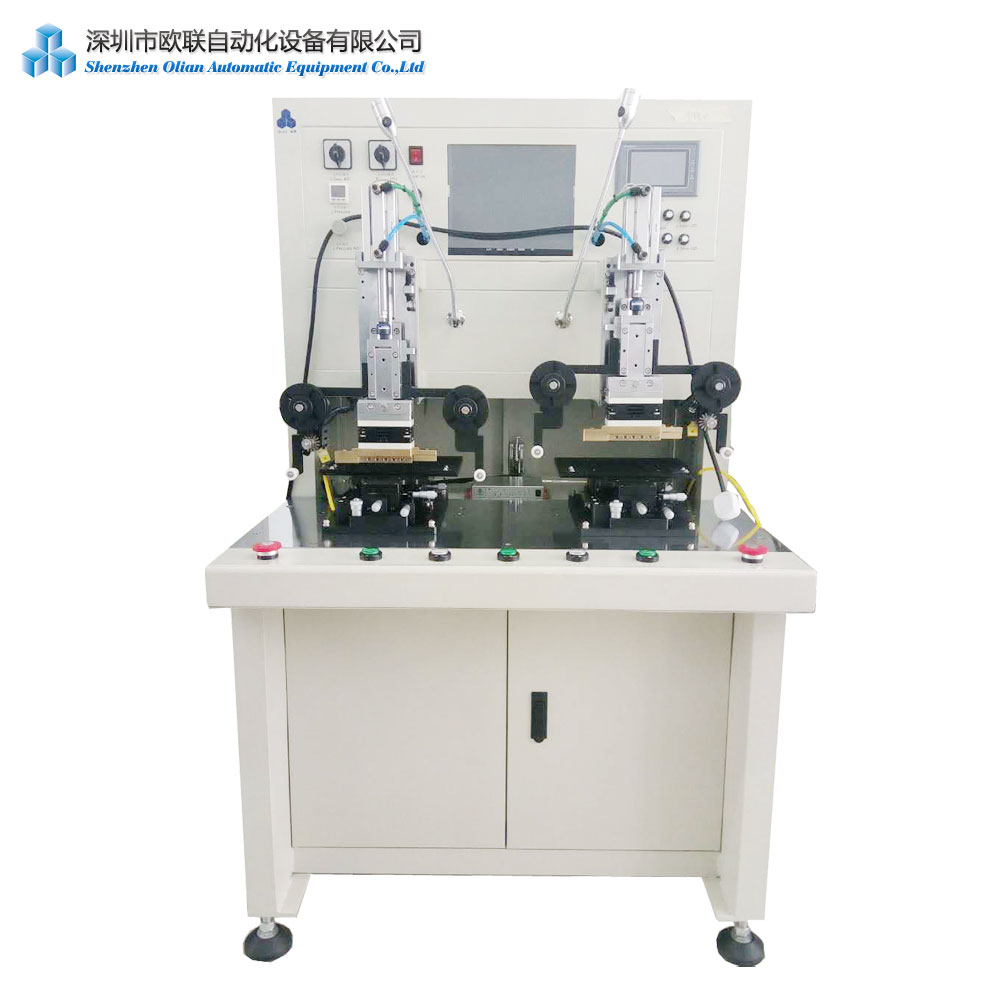
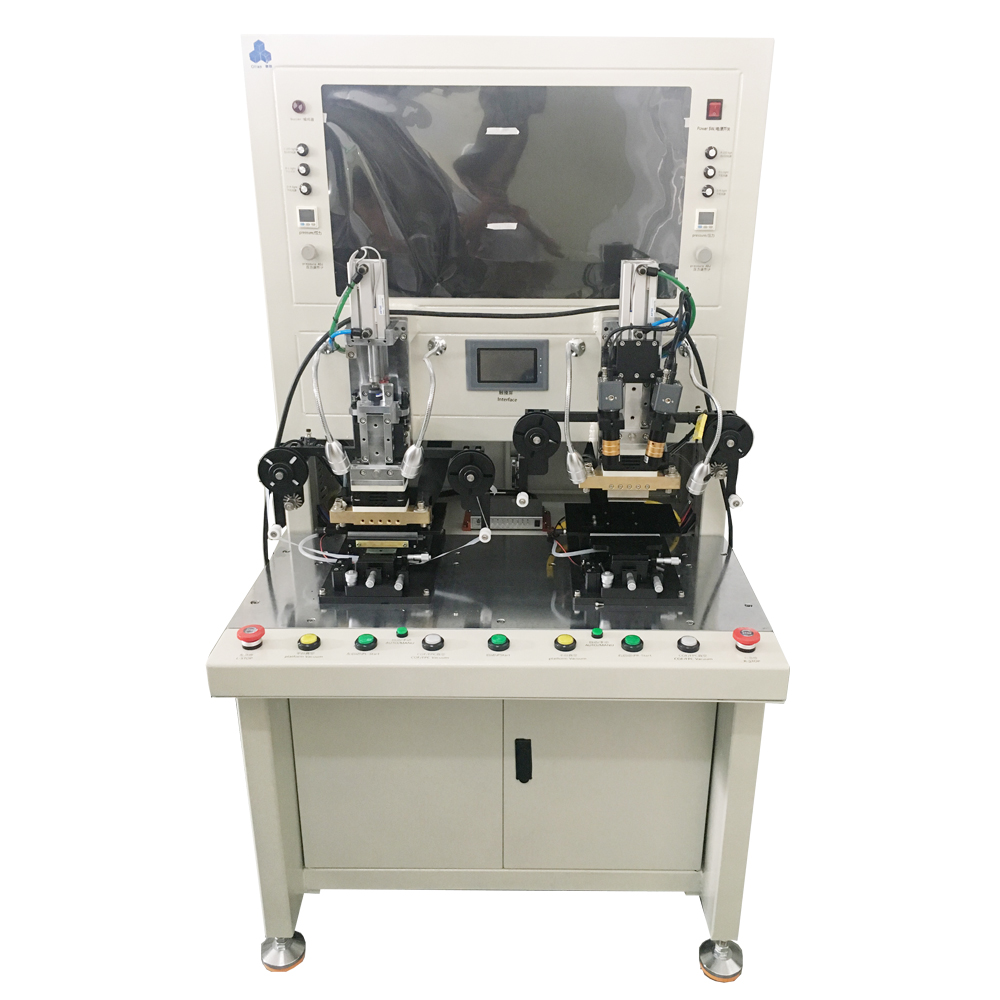

Welcome you visit us if you do the OLED edge screen/curved screen/full screen(Huawei Mate10,Mate 20,8X,OPPO/VIVO/MI/Samsung S6 S8 S9/Apple X MAX R etc.) repairing and produce business ,please contact us and test our COF bonder for cellphones.
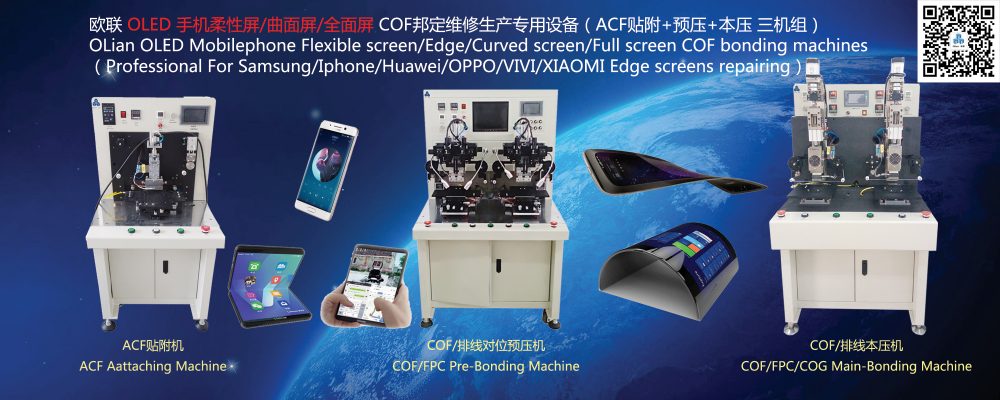
All the ACF/COG/COF/COB/FOG/FOB/FOF/OLB/TAB/PCB/FPC/TCP/ bonders ,welcome you visit us-Shenzhen Olian(LCM Equipments factory solution provider/supplier/manufactury)

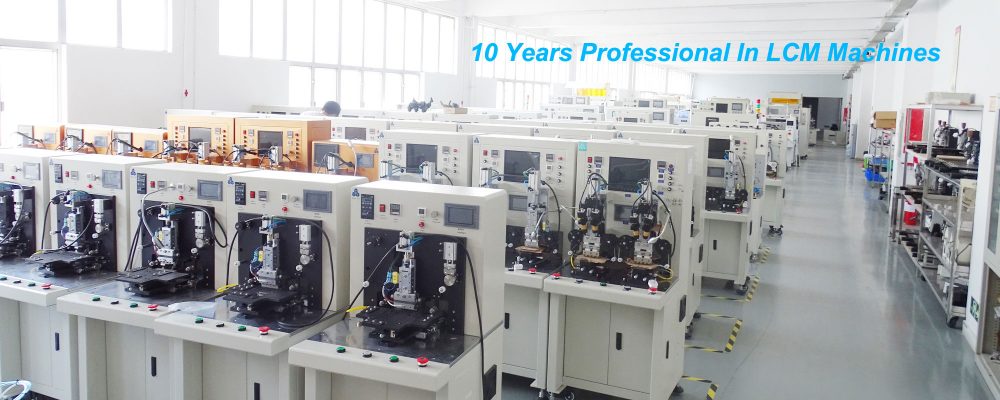
Shenzhen Olian ACF/COG/COF/COB/FOG/FOB/OLB/FOF/TAB/OGS/PCB/FPC bonder manufactory. Welcome you to be our partner and dealers all over the world.